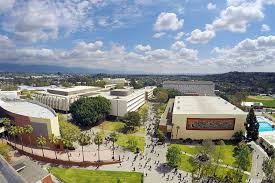Australia has long been a magnet for migrants, attracting individuals from diverse backgrounds with its promise of a high quality of life, excellent educational and employment opportunities, and a rich cultural tapestry. However, the process of migrating to Australia is a complex and multifaceted one. This article delves into the various aspects of migrating to Australia, exploring the different pathways, requirements, and considerations that prospective migrants need to be aware of.
Skilled Migration Pathways
General Skilled Migration (GSM)
The GSM program is a popular route for skilled individuals. It assesses applicants based on factors such as age, English proficiency, work experience, and educational qualifications. For example, a young engineer in their late twenties with a bachelor’s degree and several years of relevant work experience may score well. Points are allocated for each criterion, and a minimum threshold must be met. Applicants also need to have their skills assessed by a relevant assessing authority, ensuring their qualifications and experience are recognized in Australia.
Employer-Sponsored Visas
These visas require a job offer from an Australian employer. The employer must be an approved sponsor and prove that there is a genuine need for the overseas worker. For instance, a healthcare facility in a rural area might sponsor a nurse due to a shortage of local talent. The sponsored worker then needs to meet certain health, character, and English language requirements. This pathway offers a more direct route to migration, especially for those with in-demand skills.
Family Migration Avenues
Partner Visas
For those with an Australian citizen or permanent resident partner, partner visas are an option. The relationship must be genuine and ongoing. Couples need to provide evidence of their relationship, such as shared finances, joint living arrangements, and social interactions. There are different stages in the application process, starting with a provisional visa and then progressing to a permanent one, depending on the length and stability of the relationship.
Parent Visas
Children who are Australian citizens or permanent residents can sponsor their parents. However, these visas have long waiting periods and strict financial requirements. Sponsors need to demonstrate that they can support their parents financially and that their parents will not be a burden on the Australian welfare system. Health and character checks are also mandatory for the parents.
Student to Permanent Resident Transition
Study in Australia First
Many international students choose to study in Australia with the hope of migrating later. By enrolling in a recognized institution and course, students can gain valuable skills and experience. For example, a student studying information technology can take advantage of internships and networking opportunities. After graduation, they may be eligible for a post-study work visa, which can then lead to permanent residency if they meet certain criteria, such as working in a relevant field and having a good employment record.
Meeting the Requirements Post-Study
To transition from a student visa to permanent residency, students must meet specific requirements. They need to have completed a course of a certain duration and level. Their skills and occupation must be in demand in Australia. For instance, a student who studied engineering and has worked in the field for a few years after graduation may have a better chance of obtaining permanent residency compared to someone with a less in-demand degree.
Business and Investment Migration
Business Innovation and Investment Visa (BIIP)
This visa is designed for those with business acumen and investment capacity. Applicants need to have a successful business background or significant investment funds. They are required to invest a certain amount in an Australian business or venture, which can range from starting a new business to investing in an existing one. For example, an entrepreneur with experience in the technology sector might invest in a startup in Australia, creating jobs and contributing to the economy.
Regional Business and Investment Opportunities
There are also opportunities for business and investment in regional Australia. The government offers incentives to encourage migrants to set up businesses in less populated areas. These areas may have specific industry needs, such as agriculture or tourism. Migrants who choose this option can benefit from faster processing times and additional support, while also helping to boost the local economy.
Conclusion
Migrating to Australia offers a world of opportunities, but it requires careful planning and understanding of the various pathways and requirements. Whether through skilled migration, family sponsorship, the student route, or business and investment, each option has its own set of criteria and challenges. Prospective migrants should assess their own circumstances, skills, and goals to determine the most suitable pathway. With the right approach and preparation, Australia can become a new and fulfilling home, providing a platform for personal and professional growth and a chance to be part of a vibrant and diverse society.
Related Topics:




















